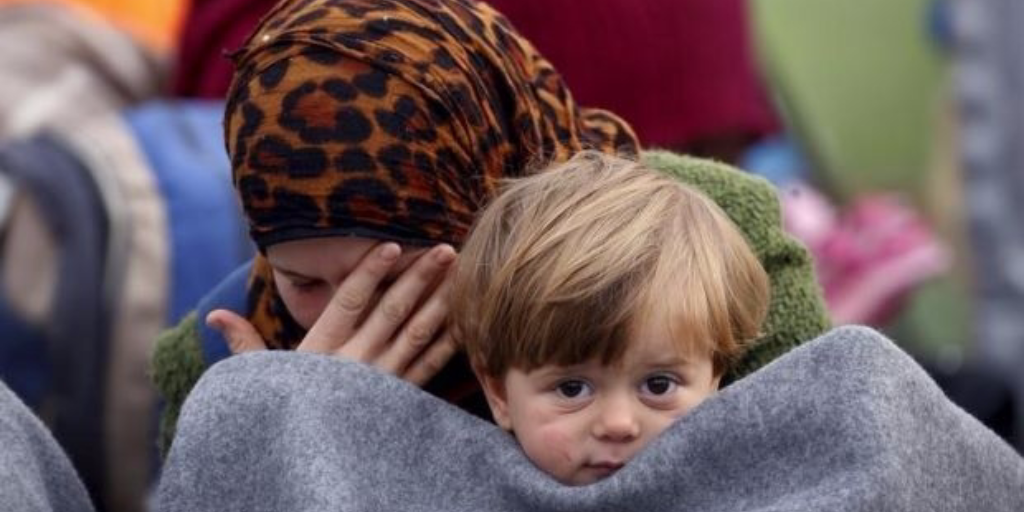While open-air migrant camps in Greece or France have attracted much media attention lately, less prominent in the media are the migrant detention centers that exist all over Europe. They carry euphemistic names such as “Immigration Removal Centre” in the UK, “Identification and Expulsion Centres” in Italy or “centers for the internment of foreigners” in Spain.
Nevertheless, they should be called prisons, because that’s exactly what they are. They are closed and secured buildings with guards in which detainees are restricted of movement and access to the outside world. But those detained within their walls are not criminals. They are migrants – with or without the status of asylum-seeker – locked up because they attempted to flee to a safer country than their own.
The conditions inside these immigration prisons have been criticized by rights organisations concerned by the lack of scrutiny and laws concerning detention centers compared to regular prisons. EU governments are benefiting from a relative lack of regulation concerning immigration detention at the EU level. The European Convention of Human Rights includes in its list of legitimate causes for detention the prevention of unauthorized entry and the facilitation of deportation or extradition. EU law merely states that detention must always be used as a last resort and must be proven to be necessary and proportional. The 2008 Return Directive stipulates that detention of a migrant should not extend beyond six months (18 months in exceptional circumstances). France sets the maximum detention period at 45 days, Sweden at two months, Belgium five months and Germany six months. That’s already a very long time to be in prison without trial.
Yet even the six months limit is being breached. The UK (the second largest ‘detainer’ of migrants in Europe) opted out of the 2008 Return Directive and therefore has no upper limit for the time a migrant can be detained. There have been cases of people detained for over three years for migration related causes. Detainees include pregnant women, elderly people and children. It also includes people who were jailed and tortured in the past and for whom a closed cell can bring back traumatic memories. But immigration detainees in the UK don’t only suffer from being confined and isolated from their community and family, they also suffer from not knowing when they will be out. According to ‘The Report of the Inquiry into the Use of Immigration Detention in the United Kingdom’ sent to the Home Office in 2015, “detainees are held indefinitely, which creates a stressful and anxious environment. This has significant mental health costs for detainees.”
The same report goes on to explain that detention in the UK is not being used as a last resort nor strictly when necessary. Evidence for this is the fact that many detained migrants are later released in the community and not returned to their country of origin. In fact, the statistics show that the longer someone stays in detention, the less likely they are to be removed from the UK, which begs the obvious question: Why detain them in the first place?
What is most worrying about immigration detention becoming an increasingly common tactic for dealing with asylum applicants is that no one knows how many people it concerns. EUROSTAT (the EU’s statistics office) does not gather data about immigration detention despite its mission “to be the leading provider of high quality statistics on Europe”. So it is up to civil society organisations to do so – not an easy task when funding for such research is hard to get and governments can so easily ignore your calls or refuse to disclose information. In 2013 the European Migration Network (EMN) estimated that 92,575 people were detained across Europe excluding Cyprus, Greece and Portugal, which did not provide data. France was the largest detainer with 38,226 detained. However the Global Detention Project database estimated that in 2013 there were 51,385 migrants detained in France only. Another reason to believe that these numbers might be too low is that the EMN considered the UK to be detaining 2,300 migrants at any one time. The figure from the Home Officer for the year 2013 is close to 30,000, which pushes up the EU total in 2013 to around 135,000. Other reports suggest numbers much higher than that.
After a large-scale joint study on immigration detention in Europe in 2014, Access Info Europe and Global Detention Project wrote that “it is impossible to obtain a true picture of the number of migrants and asylum seekers being held in detention because the information is often not available, and when it is, it is not complete or comparable”. Fourteen of the 33 countries in the study could not or would not give the number of detained migrants on their territory and 20 countries could not give a complete and accurate list of the location of their detention centers. The report adds: “it is often not clear how governments themselves are arriving at migration detention policy given the paucity of the data collected (…) There appears to be no fact-based means to assess implementation of the EU’s legal framework concerning the treatment of migrants and asylum seekers.”
These observations are more than worrying. They show a blatant absence of political will to study the situation and formulate policy accordingly. No comprehensive solution can be implemented without a thorough understanding of the problem. Scaremongering about refugee arrivals has been on the agenda of EU governments for years. Informed policy-making about the issue apparently hasn’t yet made it there.







Comments (0)